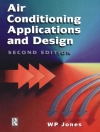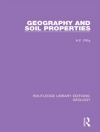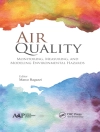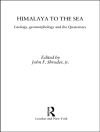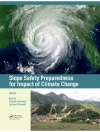According to UN estimates, approximately nearly half of the world’s population now lives in cities and that figure is expected to rise to almost 70% by 2050. Cities now account for around 70% of worldwide greenhouse gas emissions, and this percentage is predicted to rise in the near future as a result of projected increases in global urbanization patterns. It is widely acknowledged that irrational urban planning and design can increase emissions while also exacerbating threats and risks, resulting in a slew of environmental issues such as urban heat islands, air pollution, flooding, amongst other issues, as well as environmental, social, and economic losses. Therefore, these concerns must be addressed promptly in order to cope up with these rising difficulties and make urban environments safer for residents.
With the advancement of remote sensing technology and the use of current remote observation systems, urban data science, remote sensing, and artificialintelligence (AI), modeling and quantifying emergent difficulties in urban regions and urban systems have become easy. They aid in the quantitative analysis of urban shape, functions, and human behavior in cities. Harvesting data, developing models, and suggesting new methodologies will be aided by combining urban ecology with new breakthroughs in data science. This book is of great value to a diverse group of academicians, scientists, students, environmentalists, meteorologists, urban planners, remote sensing and GIS experts with a common interest in geospatial sciences within the earth environmental sciences, as well as human and social sciences.
Table des matières
Chapter 1. Remote Sensing and Artificial Intelligence for Urban Environmental Studies.- Chapter 2. A Systematic Review on the Application of Geospatial Technology and Artificial Intelligence in Urban Growth Modeling.- Chapter 3. Urban Expansion Monitoring Using Machine Learning Algorithms on Google Earth Engine Platform and Cellular Automata Model: A Case Study of Raiganj Municipality, West Bengal, India.- Chapter 4. Multi-Temporal Dynamics of Land Use Land Cover Change and Urban Expansion in the Tropical Coastal District of Kozhikode.- Chapter 5. Land Use Land Cover Change Modeling and Forecasting in Mumbai City by Integrating Cellular Automata and Artificial Neural Network.- Chapter 6. Monitoring Urban Sprawl Using Geo-Spatial Technology: A Case Study of Kanpur City, India.- Chapter 7. Studying Urban Growth Dynamics in Indo–Gangetic Plain.- Chapter 8. Monitoring and Prediction of Spatiotemporal Land Use Land Cover Change Using Markov Chain Cellular Automata Model in Barisal, Bangladesh.- Chapter 9. Urban Change Detection Analysis Using Big Data and Machine Learning: A Review.- Chapter 10. Urban Green and Blue Spaces Dynamics – A Geospatial Analysis using Remote Sensing, Machine Learning and Landscape Metrics in Rajshahi Metropolitan City, Bangladesh.- Chapter 11. Quantifying the Impact of Urban Greenspace Pattern to Land Surface Temperature: Evidence from an Urban Agglomeration of Eastern India.- Chapter 12. Urban Effects on Hydrological Status and Trophic State in Peri-Urban Wetland.- Chapter 13. Integrated Urban Decarbonization Planning Tool for Global Cities.- Chapter 14. Perception of Ecosystem Services from Urban Green Space: A Case from An Urban and A Peri-Urban Green Space in English Bazar Urban Agglomeration, Eastern India.- Chapter 15. Monitoring Spatio-Temporal Reduction of An Urban Wetland Using Landsat Time Series Analysis: A Case Study of Deepor Beel, Assam, India.- Chapter 16. GIS-Based Methodology and World Urban Database and Access Portal Tools (WUDAPT) For Mapping Local Climatic Zones: A Study of Kolkata.- Chapter 17. Air pollutants-induced environmental critical zones in capital city of India.- Chapter 18. Nexus Between Anthropogenic Heat Flux and Urban Heat Island.- Chapter 19. Impact of Urbanisation on Land Use Land Cover Change and Land Surface Temperature in a Satellite Town.- Chapter 20. Identifying the Flood Hazard Zones in Urban Area Using Flood Hazard Index (FHI) – A Case of Capital City of India.- Chapter 21. An Assessment of Traffic Noise Level in Agartala Municipal Corporation Using Geo-Spatial Technology in Tripura, India.- Chapter 22. Solid Waste Management Scenario of Raiganj Municipality, West Bengal, India.- Chapter 23. Integration of Advanced Technologies in Urban Waste Management.- Chapter 24. Rethinking the Urban Form and Quality of Walking Experience Using Geospatial Technology.- Chapter 25. A Remote Sensing and GIS Based Approach for Assessment of Drinking Water Quality and Its Association with Land-Use Land-Cover in Azamgarh City, India.- Chapter 26. Urban Planning in Perspective of UN Sustainable Development Goal – 11 Using Geospatial Technology: A Case Study of Kolkata Megapolis (India).- Chapter 27. An Introduction to Big Data and its Possible Utility in the Urban Context.- Chapter 28. Rethinking Progress in Approaches and Techniques for the Urban Environmental Studies.
A propos de l’auteur
Dr. Atiqur Rahman is Professor of Geography at Dept. of Geography, Faculty of Natural Sciences, Jamia Millia Islamia. He is Alumnus of Aligarh Muslim University Aligarh. He completed B.Sc. (Hons.), M.Sc., M.Phil., and Ph.D. from AMU, Aligarh. His research interest is urban environmental management, water resources, and use of remote sensing satellite data, GIS, and GPS. He was Post-doctoral Fellow (PDF) at UFZ-Centre for Environmental Research, Leipzig, Germany (1999). He was Co-PI of Indo-Germany DST-DAAD major project. He is Recipient of prestigious Young Scientist Project Grant Award (2001-2004) from Department of Science and Technology (DST), Government of India. He worked as Member of Scientific Research Team of NASA funded UEM project on
Urban Ecology and Sustainability (2004-2007). He is Co-PI Indo-Canadian major research projects on
Economic Transformation and Childhood Obesity funded by ICMR (India) and CHI (Canada) 2010-2015. He was Co-PI of a major research project funded by Ministry of Environment and Forest, Government of India. He was the collaborating Scientist of NASA funded major project on
Impacts of Desert Urbanization on Climate using Remote Sensing and Numerical Modeling (2012-2015). Prof. Rahman has also done professional development initiative training on Climate Change and Its Impacts: Resilience and Adaptation to Changes in Precipitation at Brown University, USA (2010). He served as Steering Committee (SC) Member (2009-2012) of Population and Environment Research Network (PERN), CISIN, Columbia University, USA. He was Advisor-Technical cum Consultant on Remote Sensing and GIS for the project (2013-18) in the PHFI & AIIMS, and Emory University, USA project. He was also Member of the National Steering Committee (NSC) on Technology Need Assessment (TNA) for Habitat Sector (TIFAC), Department of Science and Technology, Government of India. He also served as Member, Governing Body (GB), of some colleges of University of Delhi as University Nominee. He was Faculty Coordinator, Inspired Teachers In-Residence Programme, organized by the Office of the President of India at Rashtrapati Bhavan, New Delhi, on June 6-12, 2015. Prof. Rahman served at Jamia Millia Islamia as Hony. Dy. Director, (Academic) Jamia Millia Islamia, (2015-2018). Prof. Rahman is Coordinator, UGC-DRS SAP-I, Special Assistance Programme (SAP-I), Department of Geography, JMI. Ten students have been awarded Ph.D. degrees under his supervision. He has published 12 books and 122 peer-reviewed research papers in Applied Geography, Ecological Indicators, Urban Climate, Environment, Development and Sustainability, and Nature-Scientific Reports journal. He has widely traveled to various countries in Europe, Africa, and USA. Prof. Rahman is among the top 2% Global Elite Scientists in a study by University of Stanford, USA, published in the journal
PLOS Biology in 2020 and 2021.
Dr. Sen Roy’s is Professor at the Department of Geography and Sustainable Development, University of Miami, USA. Her research and teaching interests center on climatology, spatial analysis, and crime patterns. Her work focuses on spatio-temporal patterns of climate processes across various regions, including the Indian subcontinent, South Africa, China, and USA, using advanced geo-statistical techniques to analyze trends in climatic variables. In addition, she has recently started working on crime patterns in south Florida. Her research projects include: impacts of global teleconnections on the summer precipitation in India; trends in the occurrence of extreme precipitation events in India; diurnal patterns in the timing of winter precipitation in the United States; impacts of cloud cover on diurnal temperature ranges; impacts of green Revolution induced land use changes on air temperatures and precipitation in India; trends in daily and hourly extreme precipitation and temperatures in India and South Africa; spatial characteristics of Urban Heat Island (UHI) and air pollution in Delhi, Hong Kong, and Beijing; spatial patterns of real estate values in the context of sea level rise in the City of Miami Beach; spatial analysis of traffic accidents and crime in Miami metropolitan area. Her research has been published in The International Journal of Climatology, Physical Geography, Monthly Weather Review, Geophysical Research Letters, and Journal of Geophysical Research, Weather and Climate Extremes, British Journal of Criminology, European Journal of Criminal Policy and Research, The Professional Geographer, and Applied Geography.
Dr. Swapan Talukdar is currently working as Dr. D.S. Kothari Post-doctoral Fellow at the Department of Geography, Faculty of Natural Sciences, Jamia Millia Islamia, New Delhi. Dr. Talukdar completed his Ph.D. from the Department of Geography, University of Gour Banga, West Bengal, India, in 2020. He served as Junior Research Fellow (JRF) during 2015-17 and Senior Research Fellow (SRF) during 2017-19 at the Department of Geography, University of Gour Banga. He has also completed several short and long-term courses on Remote Sensing, Machine Learning, and AI from different Scientific Institutes of India such as IIT’s and NIT’s. Dr. Talukdar has completed two international projects (as Co-PI) in collaboration with the King Khalid University, Saudi Arabia. He has published more than 50 scientific research articles in the journals of international repute such as Journal of Cleaner Production, Environmental Pollution, Scientific Reports, Ecological Indicators, Sustainable Cities and Society. His main areas of research are urban environment, urban wetlands, natural hazards, remote sensing, and AI and their applications in environmental management. He has served as Reviewer for several reputed international journals.
Shahfahad is currently working as Senior Research Fellow at the Department of Geography, Faculty of Naturalsciences, Jamia Millia Islamia, New Delhi. He has served as Junior Research Fellow (JRF) during 2017-19 and Senior Research Fellow (SRF) during 2019-present at the Department of Geography, Jamia Millia Islamia. He has published more than 30 scientific research articles in the journals of international repute such as Scientific Reports, Ecological Indicators, Remote Sensing, Geocarto International, Ecological Informatics. His main areas of research are urban environment, urban wetlands, natural hazards, remote sensing, and AI and their applications in environmental management. He has served as Reviewer for several reputed international journals.


